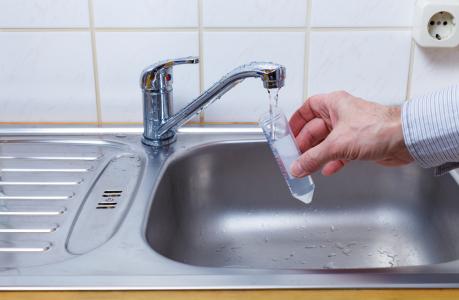
5 Frequently-Asked Questions About Reducing Radon in Your Home
Radon is a cancer-causing radioactive gas that naturally occurs in soil, water, and rock. The gas can seep into houses, contaminating the air. It’s odorless, colorless, tasteless, and undetectable without special testing equipment.
1. What is radon mitigation?
If you’ve tested your house and know you have a radon issue, you will want to mitigate (lessen or reduce) the concentration of this deadly gas in your living space. Typically, mitigation involves different techniques, depending on your home’s foundation (basement, slab-on-grade, crawlspace, or perhaps a combination).
Some methods prevent radon from entering the house by sealing cracks in the floors and walls.
Other techniques direct the flow of gas away from a home’s interior space. For example, sub-slab depressurization is a system where pipes drilled into the foundation force the flow of gas extractions to exit above the home’s roofline.
Mitigation works. Sound systems can reduce radon levels by as much as 99 percent. Be sure a qualified contractor completes your radon mitigation work. To being your search, start with the state radon contacts compiled by Kansas State University.
You can also find qualified radon contractors through two privately-run national certification programs: the American Association of Radon Scientists and Technologists and the National Radon Safety Board.
2. When do I need radon mitigation?
Exposure to radon is never considered safe. The Environmental Protection Agency recommends initiating radon mitigation if your test results are 4 picocuries per liter (pCi/L) or higher. Lower levels may still pose a risk.
3. How much does it cost?
Depending on the size of the house and the foundation design, the cost of radon mitigation averages between $800 and $2,500.
It typically costs less to incorporate preventative systems during construction than to retrofit a home with a mitigation system.
4. How long will it take?
A qualified contractor can usually complete a mitigation project on a single family home in one day.
5. What about radon in my water?
If your water is delivered through a community supplier, you can request details on local water quality. Under EPA rules, water providers must test the purity of its drinking water and file updated Consumer Confident Reports (CCRs) annually.
If your water comes from surface sources like lakes or streams, the water’s open access to air dramatically reduces the likelihood of radon contamination. If, however, your water supply comes from groundwater, a private well, your risk of radon contamination is much higher.
Although there are no federal guidelines for radon in water, the EPA has proposed that community water suppliers maintain levels below 4,000 pCi/L. Individual states may set their own requirements.
Water-based exposure to radon isn’t limited to consumption (which can cause stomach cancer), but also the risk that normal household activities (taking a shower, washing dishes, etc.) can release radon into the air.
To identify a certified laboratory that can test your water, visit the EPA or call the Safe Drinking Water Hotline at 800-426-4791.
